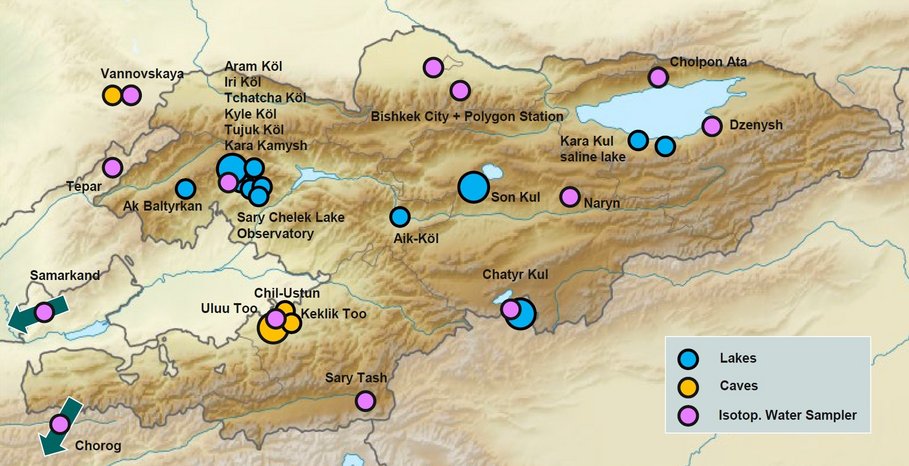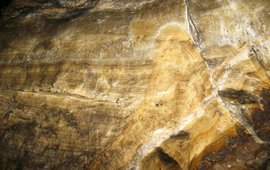Focus Site Central Asia | Palaeoclimate, Environment and Climate Change
Central Asia, extending between the Caucasus and the eastern Tibetan Plateau, with a semiarid/arid belt with water shortage to the west and a glaciered mountainous area with very unstable surface conditions to the east, holds a key position for understanding geodynamic and climate processes. Given the climatic and topographic features, Central Asia provides a natural laboratory to monitor risk scenarios related to water excess and shortage, and high seismicity. This initiative aims to investigate cause-effect-relations of landscape evolution at different spatial and temporal scales using ground and space-based monitoring systems.

In an integrated approach consisting of investigations of palaeo-climate archives (lake sediments and speleothems), as well as parallel limno-, speleo- and precipitation water monitoring, the magnitudes and recurrence rates of climatic and non-climatic extreme events (earthquakes, landslides, lake outbursts) are to be recorded in addition to the climate variability of the region on various time scales.
The investigations are currently focused on the Kyrgyz Republic and are supported by the Central Asian Institute for Applied Geosciences (CAIAG) in Bishkek. In addition to Kyrgyzstan, other countries in the region such as Kazakhstan, Uzbekistan and Tajikistan are increasingly included in the studies. Aside CAIAG, there are already cooperative relationships with the Kyrgyz-Russian Slavic University Bishkek, the Mountain Societies Research Institute of the University of Central Asia and the Institute of Water Problems and Hydro-Power of the Kyrgyz National Academy of Sciences. Several partners from Germany (FU Berlin, TU Braunschweig, Friedrich-Schiller-University Jena) were and are involved in various projects (e.g. BMBF-CADY, BMBF-CAHOL, BMBF-PALESCA - see completed projects).

